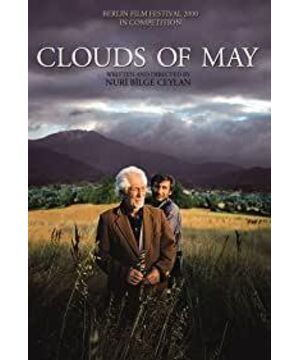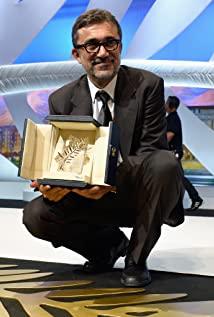Ceylon likes to tell his own stories. "Small Town", "Blue Clouds in May" and "Far Away" are a series of stories in the same line: "Small Town" is Ceylon's "Childhood Past". In fact, everyone talks about their childhood full of Affectionate, how to express is the key point, and through the fluid and delicate depiction in "Small Town", with some warm and Ceylon-characteristic fire chat scenes, everyone's laziness and vitality permeate the stagnant space , And the war, work, family, and history talked about in it do not have much profound meaning. The important thing is to restore an atmosphere, which is no different from Hou Xiaoxian’s method: depth lens, depth of field lens and static long lens are connected, providing In order to create a flowing and continuous atmosphere, Hou Xiaoxian was influenced by Ozu in the Japanese-style housing structure in Taiwan. He paid attention to the oriental charm revealed by the visit of the tatami Japanese decorations with neat composition. Ceylon is the owner, Abbas. Vigorous, a large number of outdoor panoramic deep shots, depicting the country and the field he loves, his hometown.
There is a Mudhafi who wants to be a director in "May Blue Sky". Those who have watched "Far Away" will definitely think of the younger brother who went to Istanbul to find his brother, and that brother was also played by Mudhafi. This Naturally, it is a connected story in the same line, and in "May Blue Clouds" we can also see many scenes that have appeared in "Small Town": the scene that Ali and Mudhafi encountered while walking. A tortoise, clouds floating in the sky, clammy, leisurely, and a family environment that seems to have some frictions. The difference is that the protagonist is an adult. Of course, we can understand this as listening to the home in the mother’s arms in "Small Town" The teenager who people argue and talk nonsense. This inexhaustible connection makes "Small Town", "May Blue Cloud Sky" and "Far Away" form a subtle intertextual relationship.
The subject matter is also the word alienation. The relationship between family members and everyone in the village is suddenly close and distant. The state of the characters in the pictures taken by the photographer Mudhafi is a kind of "acting" emotion. , Ali’s laugh and cry as much as he likes. In Muzhafi’s lens, it’s not the real state of the character. When the camera was turned off and Uncle Payei was talking, we saw one in Ceylon’s lens. A real person who is extremely mournful but hopeful, but Uncle Payei has nothing to say when Muzhafi’s camera appears. We can see the unnaturalness of the characters. Such a meta-film structure is also very interesting. , Only an empty camera can perform. When the camera comes back, my uncle is once again embarrassed: Uh, what can I say. The alienation that Ceylon wants to express is a kind of alienation between people under the lens and the lens, which cannot open the heart of the communication. Unlike "The Far Place", Ceylon expresses the thinking about the film, and Bazin said " Restoration to the real world". Restoration is not reality. Ceylon showed that the botched filmmakers could not do it, showing an extremely rigid state. Of course, there was also Ceylon’s own cleverness. Maybe he was hiding behind the camera. Sneaking, presenting a different kind of real world, incorporating thinking about video intervention into reality. As the film progresses, the characters have an evasive attitude towards the camera, staring directly at the camera (Mudhafi’s lens) with a relatively obvious push-pull effect, which shows that this is a Mudhafi that is different from Ceylon’s images. The image of this kind of exploration is especially Abbas. With the superb performance of the Upper Ceylon family in this movie, this movie really has a lot of space for thinking and viewing value.
View more about Mayis Sikintisi reviews







